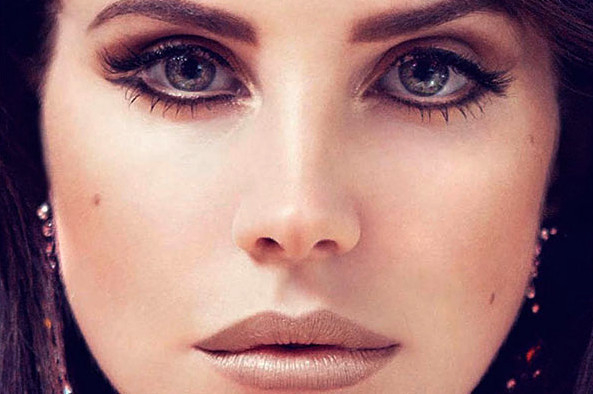
Spooky midcentury paintings of big-eyed children and the equally twisted tale of the artist behind them are at the centre of Tim Burton’s new film, Big Eyes. The true yet surreal story of painter Margaret Keane also resonates throughout the film’s evocative title track by singer Lana Del Rey. The haunting song, Big Eyes, which was nominated for a Golden Globe (it was won by Glory, from Selma, by John Legend and Common), is a natural fit for Del Rey, a chart-topping pop artist who is often noted for her cinematic style.
Case in point: Her last album, Ultraviolence, is named after A Clockwork Orange reference and her contributions to other soundtracks, such as Maleficent and The Great Gatsby, feel more like extensions of Del Rey’s own work than side projects. The 29-year-old East Coast native (real name Elizabeth Woolridge Grant) spoke about working with Burton, her love of the surreal and what it’s like to think in pictures.
In film as with your own records, your aesthetic is so beautifully melancholy. Is making music a sad endeavour for you?
[Laughs]. No, I really enjoy it. Making a record — it’s where all the fun is. When I’m done, it’s like, oh, God. I kind of go into mourning.
Wow. I would have never expected you to use the adjective “fun” when describing the process.
Sad is happy to me. I love it. When I write something bittersweet, I smile. That’s why I like Tim Burton. His world has that kind of foundation too.
So you’re a Burton fan?
I am a huge fan. I love Edward Scissorhands. But it was Harvey Weinstein who wanted me to work on this. He asked six month ago if I would do a title track, then during editing he wanted one more song for the end. That ended up being I Can Fly.
Your sound is so noirish and visual. Is the process similar when making your own music as opposed to a film track?
Definitely. I can see it and I can hear it. I’m working on a new record now, and I have this one song, Music to Watch Boys To. The title lends itself to a visual of shadows of men passing by, this girl’s eyes, her face. I can definitely see things.
This film has great imagery thanks to those saucer-eyed paintings, but it’s also this harrowing story of a woman deceived by her husband. He essentially claims he’s the painter of the portraits, and for years the world believes him.
When writing music, my favorite place to travel is in my imagination, so having a movie like this makes it easy to go there. I can imagine another layer, what happened to Margaret [Keane, the artist played by Amy Adams], how excited she was in the beginning, how she thought she found a father for her daughter. And it turned out to be a nightmare. It’s a great story to build a song around.
Right. A compelling film score should not just be echoing what you see in a film; it should, in fact, add another layer.
For me, the melody should also tells its own story. Whether it’s minor or major, whether you choose to use a violin or a flute. In The Godfather, so many of those little cues were just a horn or a violin. Think about the mood of the film ... there was a reason why the music was so solitary.
Now your title track has a Globe nomination, competing with contemporaries like John Legend and Lorde.
I grew up watch the Oscars and Golden Globes, but I don’t really remember the best song category having a lot of contemporary artists in it. But maybe it’s just me because I’m more about scores.
What are some favourites?
Thomas Newman’s score for American Beauty. I remember the first time I saw the film, the score is the first thing you hear. I loved it. Or the cues that Nino Rota did for The Godfather or Giorgio Moroder for Cat People. I loved writing for movies because I love anything that makes you dream. I still watch movies to dream.
Daniel Heath produced and co-wrote Big Eyes with you. He’s been a longtime collaborator.
Yes! [Laughs]. Dan was my first boyfriend’s best friend. Back then he was doing cues for reality television — the shows were terrible, but his work was beautiful. I said, ‘You’ve got to work with me on real records. The songwriting is simple: intro, verse one, a chorus, which repeats three times. The bridge is separate from everything else.’ That was all he needed to hear to start sending me amazing compositions. He did the title track for Ultraviolence for me. He adds a lot of cinema to my sound.











